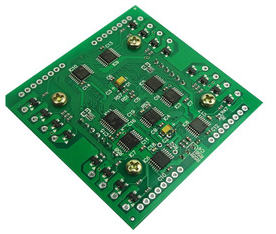1. The harm of poor FPC design to SMT production.
The assembly quality of SMT is directly related to the design of FPC, which is very important. FPC design is the primary condition to ensure the quality of SMT assembly. Poor FPC design is very harmful in SMT manufacturing.
1.1. Cause a lot of welding defects.
The SMD/SMC device corresponding FPC pad design is correct, the placement is a small amount of deviation, which is corrected by the tension of the molten tin surface during reflow soldering (SMT is called the self-correction effect); on the contrary, if the SMD/SMC The pad design of the FPC corresponding to the device is unreasonable or incorrect. Even if the placement position is very accurate, soldering defects such as component offset, suspension bridge, tombstone, and false soldering will occur after reflow soldering.
1.2. The delay in the delivery of the customer caused the customer's dissatisfaction.

Increasing the workload of repairing and repairing boards, wasting man-hours, and delaying the delivery of customers caused customer dissatisfaction.
1.3. Increase the process flow, the resources are not used reasonably and rework at the same time increase the process flow, waste materials and waste resources. So that resources cannot be used rationally.
Rework, the process of rework should be added during the rework process. The rework process has
Unreasonable selection of SMD/SMC devices and process materials can also cause failure and waste of SMD/SMC devices and FPC.
1.4. Rework will cause damage to SMD/SMC devices and scrap FPC products.
In the process of repairing the installed product, it may cause damage to the SMD/SMC device (some SMT devices cannot be reworked twice) and the FPC is scrapped.
Such as the rework of BGA devices, the removed devices must be re-balled before they can be used again. The solder feet of the material cannot be repaired repeatedly, otherwise it will easily cause the solder feet to fall off (SMT is called cap-off phenomenon)
1.5. After repair, it will directly affect the reliability of the product and SMD/SMC devices.
Two to three times of heating are required during the soldering process, which will greatly reduce the bonding force between the FPC pad copper and PI, which directly affects the defective defects of the FPC during the assembly process and the electrical performance of the SMD/SMC device itself will also decrease.
1.6. Unreasonable design affects the efficiency of placement and the utilization rate of the machine.
Due to the unreasonable design, the manufacturability of the product in the SMT assembly process is poor, which increases the difficulty of the placement process, and affects the efficiency of placement and the utilization rate of the machine.
1.7. Product development time affecting customers
Due to the unreasonable design of SMD/SMC pads, the SMD/SMC pads on FPC products have to be redesigned and re-sampled. This will extend the delivery time of FPC products and directly affect the progress of customer assembly and launch. Affect the customer's product development time and development cycle.
2. Design of SMD/SMC component pads
2.1. Design of device-to-device spacing. In production, it is found that the spacing of SMD/SMC pads is too small, which is easy to cause bridging. Therefore, the spacing of components should be as large as possible in the design, but the high density of component installation limits the spacing between components. It may be too large. Practice has proved that the pad spacing of adjacent components is above 0.3mm, and there is almost no bridging.
3. The design of the via hole.
In the design of the pad of the SMD/SMC device in the FPC flexible printed circuit board, the via hole cannot be set in the pad area, or the via hole is set to be directly connected to the pad to prevent the loss of solder during heating, causing the element Welding and missing soldering between the device pin and the pad have been proved through many design explorations and production practices. When the via hole is set at a distance of ≥0.35mm from the pad, it will generally not cause the defects of false or missing soldering.
4. The design where the pad of the SMD/SMC device is connected to the power line and the ground line.
In the design of FPC flexible printed circuit board, the power line and ground line are generally designed with a thicker wire to layout, but the power line and ground line connected to the SMD/SMC pad should have a width not greater than 0.2mm The thin-necked wire is connected to prevent the wire from being too thick to absorb more heat and stealing tin, which may cause false soldering, missing soldering or erection of the components, but the thin-necked wire affects some electrical parameters of the components so that the power line and the ground wire connection are not affected. The wires connected to the pads can be designed with two or three narrow-necked wires, which are connected to the pads from different directions of the pads.